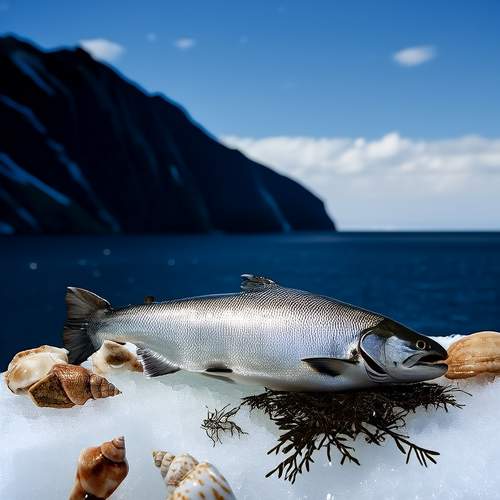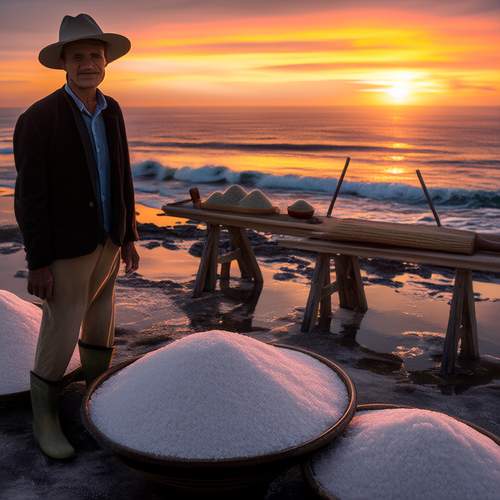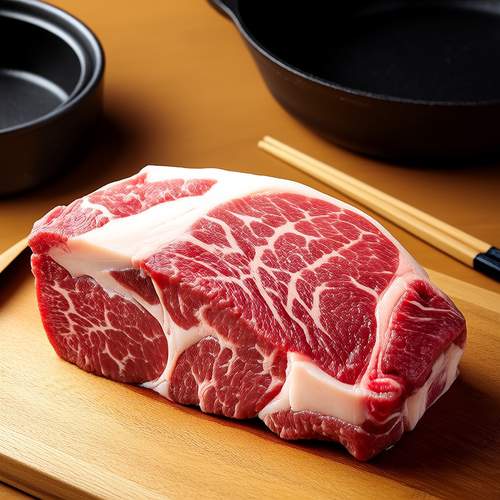Norwegian salmon has long been celebrated as one of the richest natural sources of Omega-3 fatty acids, essential nutrients that play a crucial role in human health. The cold, pristine waters of Norway provide an ideal environment for salmon to thrive, accumulating high levels of these beneficial fats. What makes Norwegian salmon particularly noteworthy is not just the quantity of Omega-3s it contains, but also the unique distribution of these fatty acids, which varies depending on factors such as diet, farming practices, and even the specific region where the salmon is raised.
The Omega-3 fatty acids found in Norwegian salmon primarily consist of EPA (eicosapentaenoic acid) and DHA (docosahexaenoic acid), both of which are linked to cardiovascular health, cognitive function, and anti-inflammatory benefits. Unlike plant-based sources of Omega-3s, which contain ALA (alpha-linolenic acid) that the body must convert, the EPA and DHA in salmon are readily absorbed. This bioavailability makes Norwegian salmon an efficient and powerful dietary option for those looking to boost their intake of these vital nutrients.
Farming practices in Norway are meticulously regulated, ensuring that the salmon’s diet is optimized for both health and sustainability. The feed typically includes marine ingredients like krill and algae, which are naturally high in Omega-3s. This controlled diet not only enhances the fatty acid profile of the fish but also ensures consistency in quality. Wild salmon, while also rich in Omega-3s, may exhibit more variability due to fluctuations in their natural prey availability. Farmed Norwegian salmon, on the other hand, offers a reliable and steady supply of these essential fats.
Interestingly, the distribution of Omega-3s within the salmon’s body is not uniform. The highest concentrations are found in the fatty tissue, particularly in the belly area, which is why cuts like the salmon belly are often prized for their rich, buttery texture and nutrient density. Muscles and other leaner parts of the fish still contain significant amounts, but the ratio of Omega-3 to other fats can differ. This variation is something chefs and nutritionists often consider when preparing or recommending salmon for specific dietary needs.
Seasonal changes also influence the Omega-3 content in Norwegian salmon. During colder months, salmon tend to develop higher fat reserves as a natural response to the lower temperatures, leading to an increase in Omega-3 concentration. This seasonal fluctuation means that salmon harvested in winter may offer a slightly different nutritional profile compared to those caught or farmed in summer. However, thanks to advanced aquaculture techniques, Norwegian producers can maintain a relatively stable supply of high-Omega-3 salmon year-round.
The health benefits of consuming Norwegian salmon extend far beyond its Omega-3 content. The synergy between these fatty acids and other nutrients like protein, vitamin D, and selenium creates a holistic nutritional package. Studies have shown that regular consumption of fatty fish like salmon can reduce the risk of chronic diseases, support brain health, and even improve mood regulation. For individuals who don’t consume enough fish, Norwegian salmon serves as an excellent supplement to bridge the gap.
Despite its many advantages, there are ongoing discussions about sustainability and the environmental impact of salmon farming. Norway has been at the forefront of addressing these concerns, implementing strict regulations to minimize ecological disruption. Innovations such as land-based aquaculture and alternative feed sources are being explored to further reduce the industry’s footprint. These efforts ensure that Norwegian salmon remains not only a nutritional powerhouse but also a responsible choice for environmentally conscious consumers.
In recent years, the global demand for Norwegian salmon has surged, driven by increasing awareness of its health benefits. Countries across Europe, Asia, and North America import large quantities, making it one of Norway’s most significant exports. The reputation of Norwegian salmon as a premium product is well-deserved, backed by rigorous quality controls and a commitment to excellence at every stage of production. Whether enjoyed raw in sushi, grilled, or smoked, Norwegian salmon delivers a unparalleled combination of flavor and nutrition.
Looking ahead, research continues to uncover new insights into the Omega-3 distribution in salmon and its implications for human health. Scientists are investigating how different farming techniques, feed compositions, and even genetic factors can further optimize the fatty acid profile. As our understanding deepens, Norwegian salmon is likely to remain a cornerstone of dietary recommendations for those seeking to enhance their well-being through natural, nutrient-dense foods.

By /May 26, 2025

By /May 26, 2025

By /May 26, 2025

By /May 26, 2025

By /May 26, 2025

By /May 26, 2025

By /May 26, 2025

By /May 26, 2025

By /May 26, 2025

By /May 26, 2025

By /May 26, 2025

By /May 26, 2025

By /May 26, 2025

By /May 26, 2025

By /May 26, 2025

By /May 26, 2025

By /May 26, 2025

By /May 26, 2025

By /May 26, 2025

By /May 26, 2025